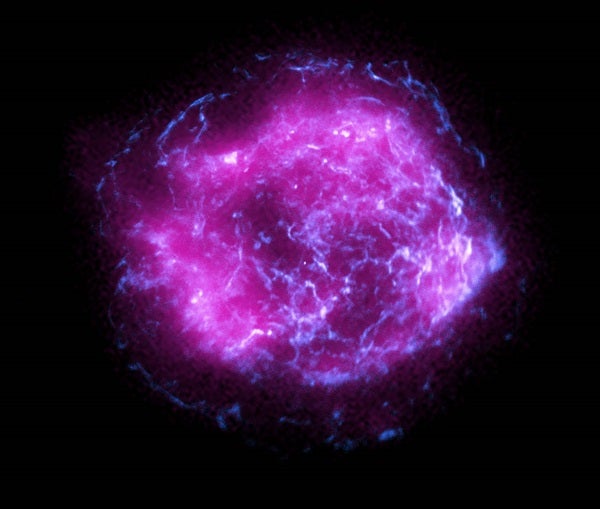Two weeks before the highly anticipated launch of the James Webb Space Telescope on Christmas day last year, NASA put a different telescope into space. The Earth-orbiting Imaging X-ray Polarimetry Explorer, or IXPE, is designed to study the opposite end of the electromagnetic spectrum from Webb, focusing on high-energy light from extreme objects such as supernovae, pulsars, and black holes. What’s more, IXPE is NASA’s first dedicated mission to measure the polarization, or orientation, of the X-ray light it receives, revealing information about the magnetic fields in the environment that created it. This gives astronomers a whole new way to look at the cosmos.
Now, IXPE has released its first image. The target? Cassiopeia A, a supernova remnant that appeared in the sky in the latter half of the 17th century after its progenitor star dramatically blew itself apart. The remnant, which now measures some 10 light-years across, sits about 11,000 light-years away. This particular image shows data from IXPE, taken between January 11 and 18, in magenta. The color’s saturation reflects the intensity (energy) of the X-ray light it observed, with more saturated areas mapping where the highest-energy light is emanating. It is overlaid with additional X-ray observations made by the Chandra X-ray Observatory in blue.
Astronomers are now working with the new IXPE data to map out the polarization of light across the remnant. It is the first time this quantity will be measured in Cassiopeia A, and will “unveil the mechanisms at the heart of this famous cosmic accelerator,” said Roger Romani, an IXPE co-investigator at Stanford University, in a press release. That’s because the highest-energy X-rays from objects like Cassiopeia A are emitted when electrons are accelerated by intense magnetic fields, and measuring polarization tells us about the nature of the magnetic field affecting those electrons. Understanding where and how strongly this acceleration is happening will help researchers better understand what takes place when massive stars explode — a process that ultimately seeds our galaxy with the building blocks of the next generation of stars, planets, and life-forms.










